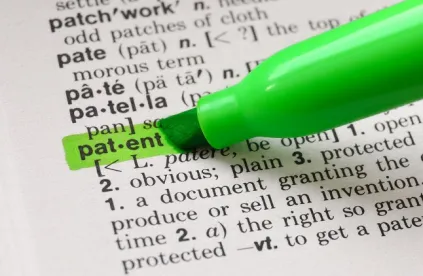In Amgen Inc. v. Hospira, Inc., the Federal Circuit held that Amgen could not obtain discovery related to activities that might infringe a patent that it had not asserted in its biosimilar patent litigation against Hospira. In particular, the court held that it lacked jurisdiction—under the collateral order doctrine—over the district court’s denial of Amgen’s motion to compel discovery regarding the cell-culture medium Hospira uses to make its biosimilar product. The court also held that Amgen had failed to show its “clear and indisputable’” right to the information as required for a writ of mandamus.
The EPOGEN® Biosimilar Dispute
This case arises under the Biologics Price Competition and Innovation Act (BPCIA), and began in December 2014 when Hospira sought FDA approval of a biosimilar version of Amgen’s EPOGEN® (epoetin afla) product. Although Hospira disclosed its biosimilar application to Amgen, it did not separately provide information about “‘the process . . . used to manufacture the biological product,’” as set forth in 42 USC § 262 (l)(2)(A). Instead, Hospira asserted that the relevant information was disclosed in its application.
Despite this dispute, the parties proceeded with the BPCIA “patent dance.” Although Amgen identified three patents on its patent list, according to the court none related to “the specific cell-culture medium used during its manufacturing process.” Nevertheless, in the litigation relating to the asserted patents, Amgen sought discovery about Hospira’s cell-culture medium. Hospira refused to produce the requested information, and the district court denied Amgen’s motion to compel, holding that the information sought had “‘essentially, no relevance to the patents that are asserted.’”
The Federal Circuit Decision
The Federal Circuit decision was authored by Judge Dyk and joined by Judges Bryson and Chen.
The Collateral Order Doctrine
The Federal Circuit first addressed Hospira’s argument that the Federal Circuit lacked jurisdiction to review the district court’s interlocutory order. While an appeal generally may only be brought from a “final” judgment, the collateral order doctrine provides a narrow exception where “‘the order [] conclusively determine[s] the disputed question, resolve[s] an important issue completely separate from the merits of the action, and [is] effectively unreviewable on appeal from a final judgment.’” The Federal Circuit found that the first two requirements may be satisfied, but the third requirement was not met.
The court noted that discovery rulings “generally do not qualify for the collateral order doctrine’s exception to the final judgment rule,” and usually “are reviewable from a final judgment.” Amgen argued that delaying review would “defeat … the purpose of paragraph (l)(2)(A)’s disclosure requirements,” which it said was “to enable the sponsor (here Amgen) to commence infringement litigation immediately, prior to FDA approval and commercial marketing of the biological product by the applicant.” The court was not convinced, however, and so determined that it lacked jurisdiction under the collateral order doctrine.
The Writ of Mandamus
The Federal Circuit also rejected Amgen’s claim that it is entitled to a writ of mandamus ordering the district court to compel the sought after discovery. The court emphasized that “[m]andamus is a drastic remedy reserved for the most “extraordinary causes.” As such, [a] party seeking mandamus must ‘have no other adequate means to attain the [desired] relief’ and must demonstrate that its right to the writ’s issuance is ‘clear and indisputable.'” As explained below, the Federal Circuit found that Amgen did not establish a “‘clear and indisputable’ right to the relief it seeks.”
The Federal Circuit noted that the Supreme Court decision in Amgen v. Sandoz limited the mechanisms by which a reference product sponsor might obtain information on the biosimilar product and manufacturing process, but identified two options that remain:
- sue on “patents described in [paragraph (l)(3) of the BPCIA],” 35 U.S.C § 271(e)(2)(C)(i), i.e., the ‘list of patents for which the . . . sponsor believes a claim of patent infringement could reasonably be asserted ….'”
- sue on “a patent that ‘could be identified’ under paragraph (l)(3), 35 U.S.C. § 271(e)(2)(C)(ii) (emphasis added).”
However, “Amgen did not list any of its cell-culture patents, nor did it bring suit on any of these patents as ones that ‘could be identified’ under paragraph (l)(3)(A).” Thus, in the court’s view “Amgen … declined to pursue either [of] the … alternatives” available to it under the BPCIA.
The Federal Rules of Civil Procedure Govern Discovery Under the BPCIA
Important to the court’s decision was its conclusion that:
Access to information under paragraph (l)(2)(A) … is governed by ordinary rules of litigation in federal district courts, i.e., the Federal Rules of Civil Procedure.
The Federal Circuit pointed to the requirement in the Federal Rules of Civil Procedure that “discoverable information must be ‘relevant to any party’s claim or defense.’” Since Amgen had not asserted its cell-culture patents, the Federal Circuit agreed with the district court that “the composition of Hospira’s cell-culture media is not relevant to any claim of infringement of the patents asserted by Amgen or any of Hospira’s defenses or counterclaims.”
In reaching this conclusion, the Federal Circuit clarified that its statement in Amgen v. Sandoz that a reference produce sponsor “‘can access the required information through discovery’” … did not purport to hold that the usual rules governing discovery do not apply in the BPCIA context.”
Sponsors Can Bring Suit Without Violating Rule 11
The Federal Circuit rejected Amgen’s contention that not obtaining the requested discovery would thwart its ability to sue Hospira on its cell-culture patents under the BPCIA. On this issue, Amgen argued that without the discovery Amgen could not form a good faith belief of infringement and would be susceptible to sanctions under Rule 11 or antitrust laws if it listed and asserted its cell-culture patents. The Federal Circuit found that “Amgen’s argument misunderstands the statute.”
First, the court explained that (l)(3)(A) “merely requires the sponsor to list patents that it ‘believes . . . could reasonably be asserted,” but does not impose a “sanction for holding or asserting a mistaken belief in good faith.” The court also explained that once the sponsor lists a patent, the biosimilar applicant “must once again come forward with additional disclosures under paragraph (l)(3)(B),” stating its reasons why a claim of patent could/not “reasonably be asserted.” In the court’s view:
If the applicant fails to comply with its obligation to respond under paragraph (l)(3)(B), the sponsor would have a reasonable basis for asserting a claim of patent infringement.
The court discussed how Rule 11 might operate in the BPCIA context. As noted by the court, Rule 11 permits filings to “‘to the best of the person’s knowledge, information and belief, formed after an inquiry reasonable under the circumstances,’” and permits allegations that “‘will likely have evidentiary support after a reasonable opportunity for further investigation or discovery.’” According to the Federal Circuit:
[I]f a sponsor forms a belief based on an inquiry limited by an applicant’s withholding of information, the sponsor has still satisfied Rule 11.
The Federal Circuit found further support for its reading of Rule 11 in the fact that “[t]he Supreme Court appears to have contemplated the filing of suit after an applicant fails to disclose information under paragraph (l)(2)(A).”
Overcoming The Biosimilar Information Imbalance
This Federal Circuit decision appears to weigh in favor of being over-inclusive rather than under-inclusive when deciding which patents to include on the (l)(3)(A) patent list. Indeed, the court reminds us that the biosimilar applicant can challenge the listing of a patent when it provides its (l)(3)(B) response. As such, when the full patent dance procedures are followed, the reference product sponsor may have ample basis for satisfying Rule 11. On the other hand, when the biosimilar applicant withholds information, the Federal Circuit suggests that would be a “circumstance” that would inform the Rule 11 inquiry.
Any opinions expressed in this article are personal to the authors and do not reflect the views of Foley & Lardner LLP, its partners, or its clients.




 />i
/>i
